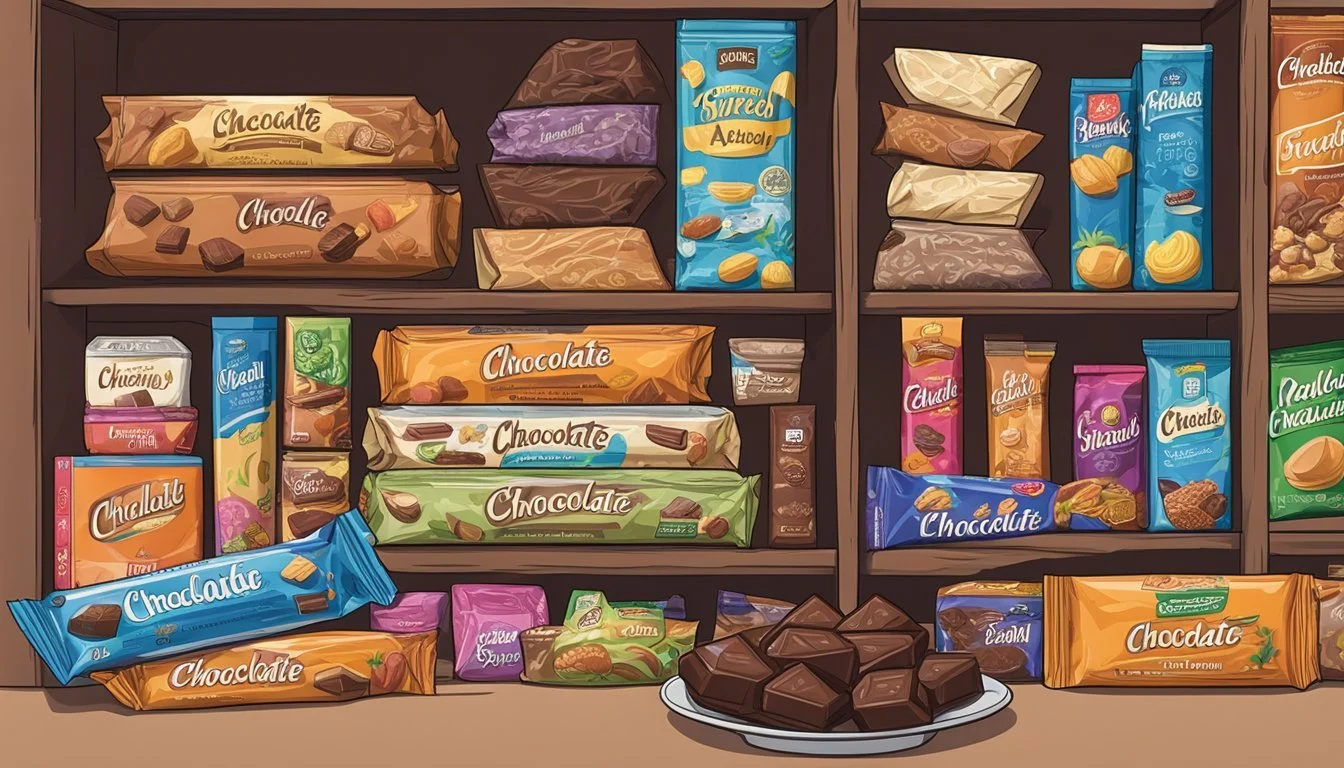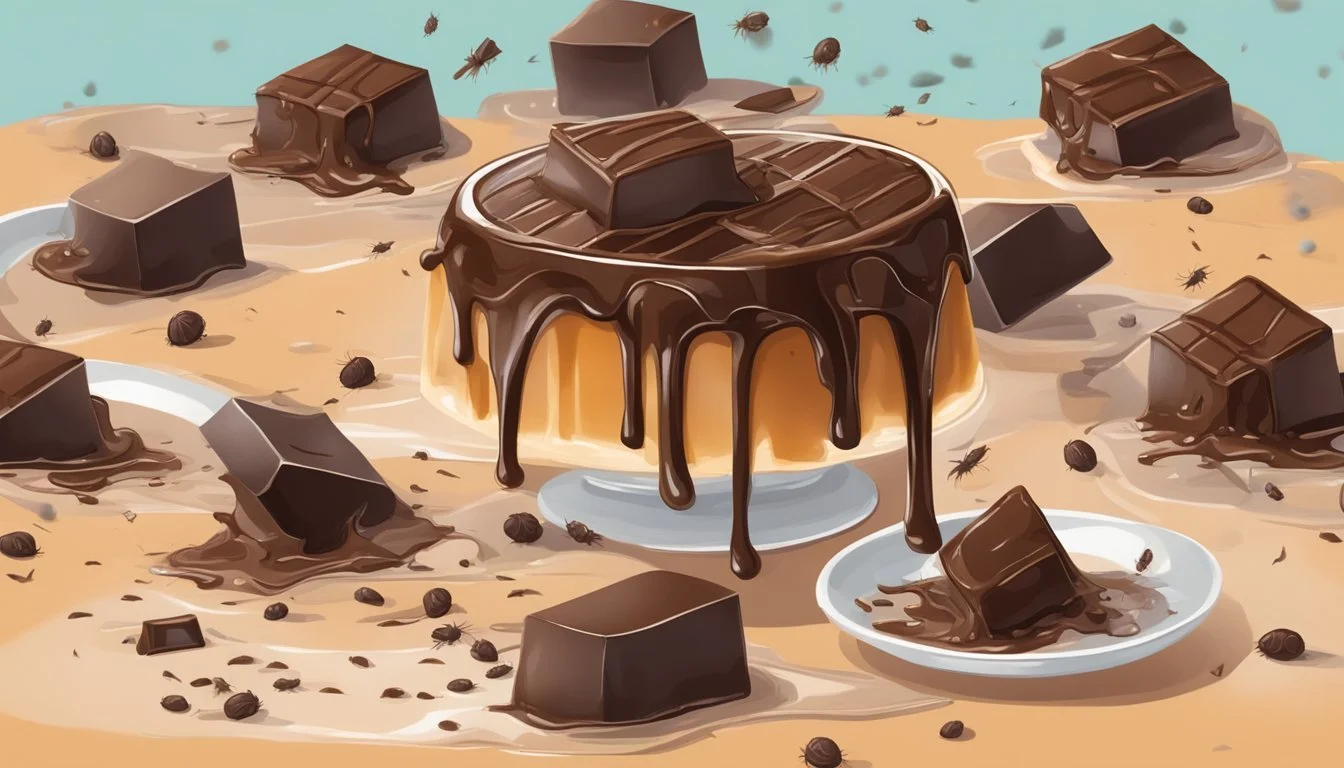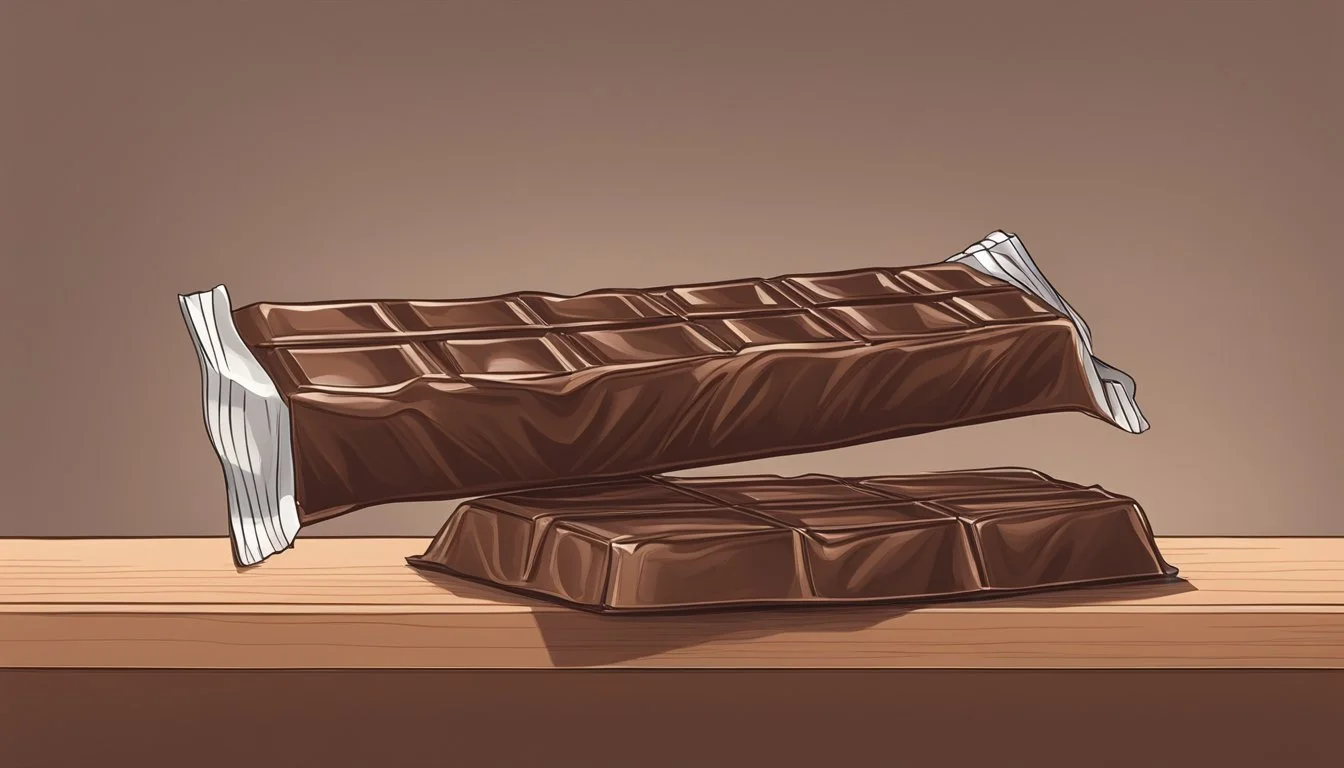Does Chocolate Go Bad?
Understanding Shelf Life and Spoilage Signs
Chocolate, a beloved treat worldwide, can indeed go bad. Despite its reputation for having a long shelf life, certain conditions can propel the process of expiration. Factors such as the type of chocolate, its ingredients, storage conditions, and packaging play significant roles in determining its longevity. Darker chocolates, which contain fewer dairy components, generally last longer than their milk or white chocolate counterparts, which can spoil more quickly due to the presence of milk solids.
The most common indicator of chocolate that has passed its prime is a phenomenon known as 'chocolate bloom'. This occurs when sugar or fat within the chocolate rises to the surface, creating a whitish, sometimes grainy coating. While bloom may alter the texture and appearance, it does not necessarily mean the chocolate is unsafe to eat. However, the presence of mold or an off smell signifies spoilage, rendering the chocolate inedible.
To extend the shelf life of chocolate, it should be stored in a cool, dry place away from direct sunlight and strong odors, as chocolate can absorb flavors from its environment. The packaging should be airtight to prevent exposure to moisture and other contaminants. By following proper storage techniques, chocolate can maintain its quality well beyond its 'best before' date, though it is typically recommended to consume it within a few months for optimal flavor.
Understanding Chocolate
Exploring the world of chocolate is multifaceted, extending from its diverse types to its complex production and culinary roles.
Types of Chocolate
Dark Chocolate: High in cocoa content and usually containing less sugar, it's known for its rich flavor and longer shelf life.
Milk Chocolate: It includes milk powder or condensed milk, alongside cocoa butter and sugar, leading to a creamier taste and shorter shelf life.
White Chocolate: Contains cocoa butter, sugar, and milk, but no cocoa solids, giving it a sweet, creamy flavor and a different nutritional profile.
Components of Chocolate
Cocoa Solids: Provide the flavor and are a source of antioxidants.
Cocoa Butter: The fat derived from cocoa beans, contributing to chocolate's melt-in-your-mouth texture.
Sugar: Enhances flavor but varies in amount across different types of chocolate.
Milk: Added to milk and white chocolate, affecting flavor, texture, and shelf life.
Chocolate as Food
Chocolate qualifies as perishable food, though it has a relatively long shelf-life thanks to the low moisture content and presence of preservatives like sugar and cocoa fat.
Health Benefits
Dark chocolate is praised for its flavonoids and antioxidants which may contribute to improved heart health when consumed in moderation.
Aging and Oxidation
Oxidation over time affects flavor and quality, with aging chocolate potentially turning stale, especially when improperly stored.
Chocolate Variants
Bittersweet and Semi-sweet: Often used in baking, they add a decadent taste to recipes.
Chocolate Chips and Bars: Convenience forms for cooking and snacking.
Handmade Chocolates and Truffles: Specialties that often include a variety of fillings and higher-quality ingredients.
Culinary Uses
Chocolate is versatile in cooking, suitable for baking cookies, cakes, and other desserts and for creating rich sauces and glazes in savory dishes.
Chocolate Lovers' Guide
Connoisseurs prioritize taste and texture. They often seek out single-origin bars or Belgian chocolate renowned for its smoothness and flavor complexity.
Industrial Production
Quality chocolate production hinges on meticulously controlled processes, from fermenting and roasting beans to conching, which refines texture and flavor. Packaging then plays a crucial role in preserving these qualities.
Shelf Life and Expiration
When assessing whether chocolate is past its prime, understanding its shelf life, how to interpret dates on labels, and recognizing freshness indicators is crucial. These insights help maintain the quality of chocolate, ensuring it remains safe to eat and enjoyable.
Expiration and Best-By Dates
Chocolate products typically bear a label stating an expiration or best-by date. While these dates indicate peak quality, chocolate often remains safe to consume after these dates have passed, provided it has been stored correctly.
Shelf Life Determinants
Several factors determine the shelf life of chocolate, including the type of chocolate and storage conditions. Milk and white chocolates, with higher milk content, generally have a shorter shelf life compared to dark chocolate. Proper storage in a cool, dry place, away from sunlight, extends chocolate's shelf life, sometimes up to a year or more for dark varieties.
Freshness Indicators
To gauge chocolate's freshness, one should consider its taste, appearance, and odor. Fresh chocolate should have a smooth texture and a characteristic chocolatey aroma. Any deviation may suggest that the chocolate is losing its freshness.
Signs of Spoilage
Spoilage is evident through:
Taste Test: Rancid or unusual flavors.
Odor: Any off-putting smells.
Appearance: Discoloration or mold.
If chocolate exhibits any of these signs, it should not be consumed.
Understanding Bloom
Chocolate bloom, identified by white spots or a gray film, indicates one of two things:
Sugar Bloom: Caused by moisture dissolving sugar crystals.
Fat Bloom: Occurs when chocolate melts and recrystallizes improperly.
Bloom affects appearance and texture, not safety, but may be a sign of stale chocolate.
Storage Guidelines
To preserve chocolate's quality and extend its shelf life, one must adhere to precise storage guidelines that involve temperature control, proper containment, and awareness of environmental factors.
Proper Storage Conditions
Chocolate should be stored in a cool and dry place such as a pantry or cupboard, ideally at a temperature between 60-68°F (15-20°C) and with a humidity level below 50%. It's important that chocolate is kept away from any direct heat sources or sunlight which can cause it to melt or spoil.
Packaging and Containers
The original packaging of chocolate bars generally provides adequate protection. However, for additional safeguarding or once opened, an airtight container can be used to prevent exposure to air and moisture, which can lead to mold and fat bloom. Wrapping chocolate in a plastic bag before placing it in the container can offer further protection.
Special Considerations
Chocolate absorbs odors, so it's critical to store it away from items with strong smells. Dark chocolate, due to its stability, tolerates storage conditions better than milk or white chocolate. Awareness of sugar and fat bloom, which appear as a white coating, is necessary; while these changes affect appearance, they do not render the chocolate inedible.
Freezing and Refrigeration
While not usually necessary, refrigeration can be considered for long-term storage, especially in warmer climates, in an airtight container to prevent condensation. Freezing chocolate is possible, and one can use a freezer bag to prevent freezer burn. To thaw, chocolate should be moved to the refrigerator to prevent a sudden temperature change and then gradually brought to room temperature.
When Chocolate Goes Bad
Chocolate can indeed spoil, but its long shelf life often allows for extended use beyond stated expiration dates. Recognizing when chocolate is no longer suitable for consumption is paramount for both taste and health.
Identifying Spoiled Chocolate
Discoloration: Spoiled chocolate often exhibits a gray or white chalky appearance on the surface, known as chocolate bloom. This is due to sugar or fat migration to the chocolate's exterior.
Odor: A noticeable change in smell may indicate spoilage. Quality chocolate should retain its characteristic chocolatey aroma without any off-putting or moldy scents.
Consuming Past Prime Chocolate
Consumption of chocolate past its prime may result in a less than optimal taste experience rather than a health concern. Milk and white chocolates, with higher dairy contents, are more susceptible to spoilage than dark chocolate. It is typically safe to consume chocolate that has bloom unless other signs of spoilage, such as mold or an unusual odor, are present.
Effects of Spoiled Chocolate
While eating slightly stale chocolate might not cause immediate harm, consuming chocolate with visible mold or an off odor can pose health risks. Spoiled chocolate could potentially cause stomach discomfort. If mold is detected, the chocolate should be discarded to ensure safety.
Dealing with Spoilage
Stale Taste Test: If chocolate looks okay but is past the expiration date, a taste test can be performed to check for staleness.
Halloween Candy: Parents often wonder if Halloween candy collected by children is still safe to eat months later. If the chocolate has been properly stored and shows no signs of spoilage, it is generally safe to consume.
Storage: To avoid spoilage, store chocolate at a consistent 15-17°C (59-63°F) and keep it well-sealed against moisture and air.
Miscellaneous Topics
In this section, the stability of chocolate in various contexts like baking, seasonal storage, and its interaction with water is discussed to guide the reader through best practices ensuring the chocolate's quality and safety.
Chocolate in Baking
When used in baking, chocolate’s shelf life can differ from its raw form. It is vital to consider the moisture content of the additional ingredients. For instance, recipes with dried fruit or fillings that contain water can affect the overall moisture content and potentially shorten the baked good's shelf life.
Seasonal Chocolate Care
Taking care of chocolate during different seasons is crucial due to temperature variations. In hotter months, it's best to store chocolate in a cool pantry or refrigerator to prevent melting. For seasonal chocolates, like Halloween candy, keeping them in an airtight container in the freezer can preserve their quality until the next season.
Chocolate and Water Content
Chocolate’s quality can be compromised by high water content. Moisture can lead to a phenomenon called 'sugar bloom,' where sugar rises to the surface and crystallizes. To avoid this, ensure that the storage environment is dry. Baking chocolate must be kept away from direct sources of moisture, which can affect its structural integrity and flavor during the baking process.
Additional Resources
To fully understand chocolate's shelf life and how it may vary across different types, chocolate enthusiasts can benefit from a range of resources. These include insights from experts in the food industry, discussions on chocolate forums, and findings from scientific research.
Expert Opinions
Experts in the field of food science and confectionery provide authoritative knowledge on chocolate preservation, health implications of consumption, and factors that contribute to chocolate spoilage. They cover how environmental factors such as humidity and temperature can cause changes in flavor and texture.
Food Scientists: They discuss how antioxidants and flavonoids in chocolate can react to environmental changes, leading to oxidation and potential spoilage.
Confectionery Professionals: Offer recipes and storage advice to help maintain the quality and rich flavors of chocolate.
Chocolate Enthusiasts Forums
Online forums are a melting pot of experiences shared by chocolate lovers. They provide anecdotal evidence and personal advice on keeping chocolate at its best.
Experience Sharing: Members post their personal strategies for storing different types of chocolate, including methods that prevent the dulling of flavors.
Recipe Swapping: They exchange ideas for rescuing or repurposing chocolate that has seen better days.
Scientific Research on Chocolate
Research studies examine the health benefits of chocolate, exploring the effects of flavonoids and antioxidants in dark chocolate. Scientific findings contribute to the conversation on how chocolate can be a healthful addition to one's diet when consumed properly.
Flavonoids and Antioxidants: Studies focus on the positive effects of these compounds in chocolate and how they are affected by different storage conditions.
Oxidation Processes: In-depth analyses reveal how oxidation can compromise the health benefits and taste of chocolate over time.






